Entry Database : PDB / ID : 2li9Title Metal binding domain of rat beta-amyloid Amyloid beta A4 protein Keywords / / / Function / homology Function Domain/homology Component
/ / / / / / / / / / / / / / / / / / / / / / / / / / / / / / / / / / / / / / / / / / / / / / / / / / / / / / / / / / / / / / / / / / / / / / / / / / / / / / / / / / / / / / / / / / / / / / / / / / / / / / / / / / / / / / / / / / / / / / / / / / / / / / / / / / / / / / / / / / / / / / / / / / Biological species Rattus norvegicus (Norway rat)Method / Model details closest to the average, model 1 Authors Polshakov, V. / Istrate, A. / Kozin, S. / Makarov, A. History Deposition Aug 25, 2011 Deposition site / Processing site Revision 1.0 Jan 18, 2012 Provider / Type Revision 1.1 Mar 21, 2012 Group Revision 1.2 Oct 30, 2024 Group Data collection / Database references ... Data collection / Database references / Derived calculations / Structure summary Category chem_comp_atom / chem_comp_bond ... chem_comp_atom / chem_comp_bond / database_2 / pdbx_entry_details / pdbx_modification_feature / pdbx_nmr_software / pdbx_nmr_spectrometer / pdbx_struct_conn_angle / struct_conn / struct_ref_seq_dif / struct_site Item _database_2.pdbx_DOI / _database_2.pdbx_database_accession ... _database_2.pdbx_DOI / _database_2.pdbx_database_accession / _pdbx_nmr_software.name / _pdbx_nmr_spectrometer.model / _pdbx_struct_conn_angle.ptnr1_auth_asym_id / _pdbx_struct_conn_angle.ptnr1_auth_seq_id / _pdbx_struct_conn_angle.ptnr1_label_asym_id / _pdbx_struct_conn_angle.ptnr1_label_atom_id / _pdbx_struct_conn_angle.ptnr1_label_seq_id / _pdbx_struct_conn_angle.ptnr3_auth_asym_id / _pdbx_struct_conn_angle.ptnr3_auth_seq_id / _pdbx_struct_conn_angle.ptnr3_label_asym_id / _pdbx_struct_conn_angle.ptnr3_label_atom_id / _pdbx_struct_conn_angle.ptnr3_label_seq_id / _pdbx_struct_conn_angle.value / _struct_conn.pdbx_dist_value / _struct_conn.pdbx_leaving_atom_flag / _struct_conn.ptnr1_auth_asym_id / _struct_conn.ptnr1_auth_comp_id / _struct_conn.ptnr1_auth_seq_id / _struct_conn.ptnr1_label_asym_id / _struct_conn.ptnr1_label_atom_id / _struct_conn.ptnr1_label_comp_id / _struct_conn.ptnr1_label_seq_id / _struct_conn.ptnr2_auth_asym_id / _struct_conn.ptnr2_auth_comp_id / _struct_conn.ptnr2_auth_seq_id / _struct_conn.ptnr2_label_asym_id / _struct_conn.ptnr2_label_atom_id / _struct_conn.ptnr2_label_comp_id / _struct_conn.ptnr2_label_seq_id / _struct_ref_seq_dif.details / _struct_site.pdbx_auth_asym_id / _struct_site.pdbx_auth_comp_id / _struct_site.pdbx_auth_seq_id
Show all Show less
 Open data
Open data Basic information
Basic information Components
Components Keywords
Keywords Function and homology information
Function and homology information
 Authors
Authors Citation
Citation Journal: Biophys.J. / Year: 2012
Journal: Biophys.J. / Year: 2012 Structure visualization
Structure visualization Molmil
Molmil Jmol/JSmol
Jmol/JSmol Downloads & links
Downloads & links Download
Download 2li9.cif.gz
2li9.cif.gz PDBx/mmCIF format
PDBx/mmCIF format pdb2li9.ent.gz
pdb2li9.ent.gz PDB format
PDB format 2li9.json.gz
2li9.json.gz PDBx/mmJSON format
PDBx/mmJSON format Other downloads
Other downloads 2li9_validation.pdf.gz
2li9_validation.pdf.gz wwPDB validaton report
wwPDB validaton report 2li9_full_validation.pdf.gz
2li9_full_validation.pdf.gz 2li9_validation.xml.gz
2li9_validation.xml.gz 2li9_validation.cif.gz
2li9_validation.cif.gz https://data.pdbj.org/pub/pdb/validation_reports/li/2li9
https://data.pdbj.org/pub/pdb/validation_reports/li/2li9 ftp://data.pdbj.org/pub/pdb/validation_reports/li/2li9
ftp://data.pdbj.org/pub/pdb/validation_reports/li/2li9 Links
Links Assembly
Assembly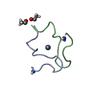
 Components
Components
 Sample preparation
Sample preparation Processing
Processing Movie
Movie Controller
Controller




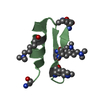
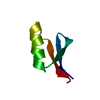
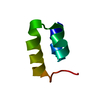



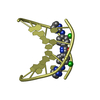
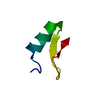
 PDBj
PDBj











 HSQC
HSQC